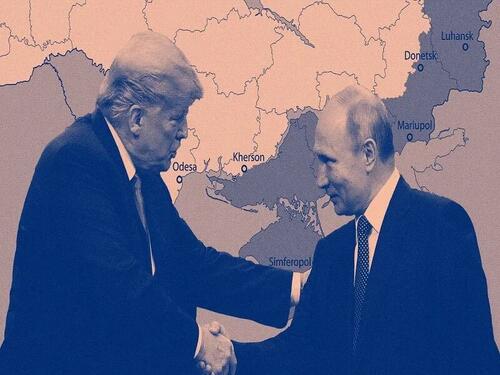Authored by Andrew Korybko via Substack,
The geostrategic context of newfound pressure upon each, their increased bilateral tensions, and rising fears that false flag provocations in Europe could manipulate them into war with one another make it likely that their planned Budapest Summit will be more successful than the Anchorage one.

The next Putin-Trump meeting will soon take place in Budapest. Prior to their last one in Anchorage, the vision that they were working towards was a resource-centric strategic partnership that could then become a steppingstone towards a more comprehensive one in the future. For that to happen, either Putin had to freeze the frontlines or Trump had to coerce Zelensky into withdrawing from Donbass, but neither could agree to what was requested of them so their New Détente went nowhere.
Even worse, the Europeans then became serious obstacles to peace, even going as far as teaming up with the Brits and Zelensky to propose dangerous “security guarantees” that riled Russia.
Trump ramped up his rhetoric against Putin afterwards, arguably due to him being manipulated by Lindsey Graham and Zelensky, thus culminating in the latest talk about sending Tomahawks to Ukraine.
It was within this tense context that they talked again, right before Zelensky’s trip to DC, and agreed to meet in Budapest.
Each side is also coming under a lot of newfound pressure nowadays that conceivably influenced their latest call and plans to meet.
From Russia’s side, the new TRIPP corridor will inject Western influence along Russia’s southern flank via NATO member Turkiye (despite Russia’s thaw with Azerbaijan), Poland is reviving its long-lost Great Power status along Russia’s western flank, and Russia’s Foreign Intelligence Service (SVR) revealed last month that French and UK troops are already in Ukraine’s Odessa Region.
As for the newfound pressure that the US is nowadays coming under, this concerns the nascent Sino-Indo rapprochement after America’s bullying of India backfired, Russia finally clinching a long-negotiated deal with China to build the Power of Siberia 2 gas pipeline on presumably favorable terms for Beijing, and all of this resulting in the failure of Trump 2.0’s Eurasian balancing act.
At the same time, Russia and the US could be manipulated into war with one another by possible British and/or Ukrainian false flags.
SVR warned twice about their alleged false flag plots in the Baltic, which was followed by the suspicious drone incident in Poland that was weaponized by deep state elements in a failed bid to manipulate its new president into war with Russia. Shortly afterwards, Estonia claimed that Russia violated its maritime airspace, which led to NATO threatening to shoot down Russian jets, then there was a Russian drone scare in Scandinavia. SVR since warned that Ukraine is now plotting a false flag attack in Poland.
The geostrategic context that was just outlined suggests that a grand compromise might now be possible so as to alleviate some of the aforesaid pressure on each, reduce bilateral tensions, and thus prevent any false flags from manipulating them into war.
To that end, Russia might accept some limited Western “security guarantees” for Ukraine, the US might curtail its arms exports to Ukraine and NATO, and then they might clinch their hoped-for strategic resource deals upon freezing or outright ending the conflict.
Informal quid pro quos, such as Russia helping the US “manage” Iran so long as the US gets Zelensky to implement a degree of (at least symbolic) “denazification” and possibly withdraw from Donbass, could also be agreed to for facilitating this arrangement.
At the same time, Ukraine, the EU, and the UK might carry out provocations to sabotage the Budapest Summit. In any case, if Putin and Trump do end up meeting again sometime soon, then they’re expected to agree to something tangible this time around.
Loading recommendations…
#PutinTrump #Meeting #Lead #Tangible #Time
